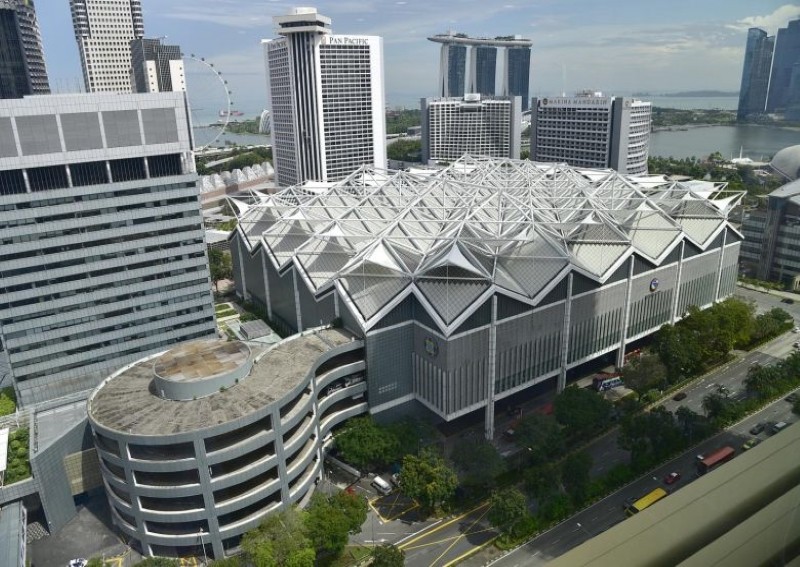3 reasons why we like Suntec REIT's latest acquisition

Suntec REIT is facing the toughest stretch in its 16-year history as a listed entity.
Listed back in Dec 2004, the REIT has been a steady and consistent distribution per unit (DPU) payer.
From a portfolio composed purely of Singapore assets such as Suntec City and Suntec Convention Centre, the REIT has now evolved to include Australian commercial properties such as 21 Harris Street in Sydney and 55 Currie Street in Adelaide.
However, the Covid-19 pandemic has badly impacted the retail and convention centre portion of the REIT’s portfolio.
For the first half of 2020, gross revenue for Suntec REIT fell 16.1 per cent year on year to $149.4 million.
The fall was mainly due to rent assistance and lower occupancy for Suntec City Mall during the circuit breaker period, as well as the closure of Suntec Convention Centre because of the pandemic.
Despite this weaker performance, the REIT manager has soldiered on, announcing last week that it had acquired a 50 per cent interest in two Grade A office buildings in London known as the Nova properties.
Suntec REIT will acquire its 50 per cent stake in the Nova properties for GBP 430.6 million (around $766.5 million).
It will be the REIT’s first foray into the UK.
[[nid:479819]]
The properties have 100 per cent committed occupancy with a weighted average lease expiry (WALE) of 11.1 years.
The net property income yield stands at 4.6 per cent and the properties will come with a 2-year guarantee on retail income to cushion against the pandemic.
There are 35 tenants in total and the developer cum asset manager is Land Securities Group plc (LON: LAND), the largest commercial property development group in the UK.
Here are three reasons why we feel this acquisition is attractive for unitholders.
The properties long WALE of 11.1 years helps to provide rental income certainty.
The first lease expiry comes seven years later in 2027, with around 8per cent of the net lettable area up for renewal.
The bulk (~ 62 per cent) of leases only come due in 2031 and beyond.
[[nid:487241]]
The office trade mix by sector is also well-diversified, with consultancy and services forming the highest proportion at 25.7 per cent of gross monthly rental income.
The top three tenants are Atkins, The Argyll Club and the UK government, forming 30 per cent of gross rental income.
Atkins is a British multinational engineering and consultancy firm that was founded in 1938.
The Argyll Club is a provider of workspaces for businesses that want to rent choice locations around London.
These tenants have a strong track record and should not face any financial stress during this crisis.
There will be a DPU uplift of 4.9 per cent on the annualised first-half 2020 DPU for the enlarged portfolio.
[[nid:485211]]
This is based on 100 per cent occupancy and there may be further upside to DPU through rent reviews that are generally conducted once every five years.
These reviews will adjust rent upwards according to the market or existing rates, whichever is higher.
Unitholders should take note, though, that this transaction will be funded entirely by debt.
Aggregate leverage ratio will rise from the current 41.3 per cent to 45.2 per cent post-acquisition.
While the higher leverage level is still below the new leverage ceiling of 50per cent set by the Monetary Authority of Singapore, it does not leave the REIT with much wiggle room left to take on additional debt.
The acquisitions provide the REIT with an opportunity to further diversify its geographic exposure.
[[nid:504170]]
For the existing portfolio, worth $10.7 billion, Singapore takes up around 83 per cent of the total asset valuation, with Australia making up the remaining 17 per cent.
With the addition of the UK, it will now take up 6.7 per cent of the enlarged portfolio’s asset valuation.
Singapore’s concentration will be diluted down to 77 per cent, while Australia will be reduced to 16 per cent.
The income contribution by property will also be more diversified, relying less on Suntec City mall for the bulk of rental income.
The existing portfolio has Suntec City contributing close to half of the total income, but this will be reduced to 43 per cent in the enlarged portfolio, with Nova contributing around 11per cent.
Suntec REIT has pulled off an astute acquisition this time.
Not only does the acquisition of Nova help to boost DPU and improve geographic diversification, but the REIT is also gaining more exposure to the commercial segment.
This move will help it to achieve better income stability as commercial properties are seeing much less disruption from Covid-19.
This article was first published in The Smart Investor. Disclaimer: Royston Yang owns shares in Suntec REIT.